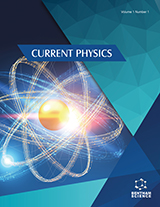Abstract
Photonic crystals (hereafter represented as PCs), a synthetic dielectric formation that employs periodic and random changes in the refractive index to control the transmission of light, were presented by Yablonovitch and John in 1987. The capability to change the transmission of the electromagnetic wave in these formations on a miniature scale is used by photonic devices built on PCs. Electromagnetic waves scatter within the PC, and destructive intrusion happens at particular wavelengths, resulting in a photonic bandgap like the energy bandgap of electron waves in a semiconductor (hereafter denoted as SC). Because of the possibility of constructing a photonic bandgap, it may be feasible to influence light transmission. Instruments with tiny footprints are also feasible. In recent years, several fascinating PC-based devices, such as sharp bent waveguides (henceforth denoted as W/G), μ-resonator cavities, and Y-branches, have been demonstrated. These remarkable properties have the potential to result in the growth of a dense integrated circuit. Though PC technology is still in its infancy, and more study is needed in this field, this chapter summarizes recent developments in this sector by presenting the utmost frequent and necessary optical devices established on PCs such as optical logic gates, optical power splitters, polarization splitters, sensing devices, and lasers. In comparison to conventional photonic devices, these devices have greater efficiency and a small footprint.













